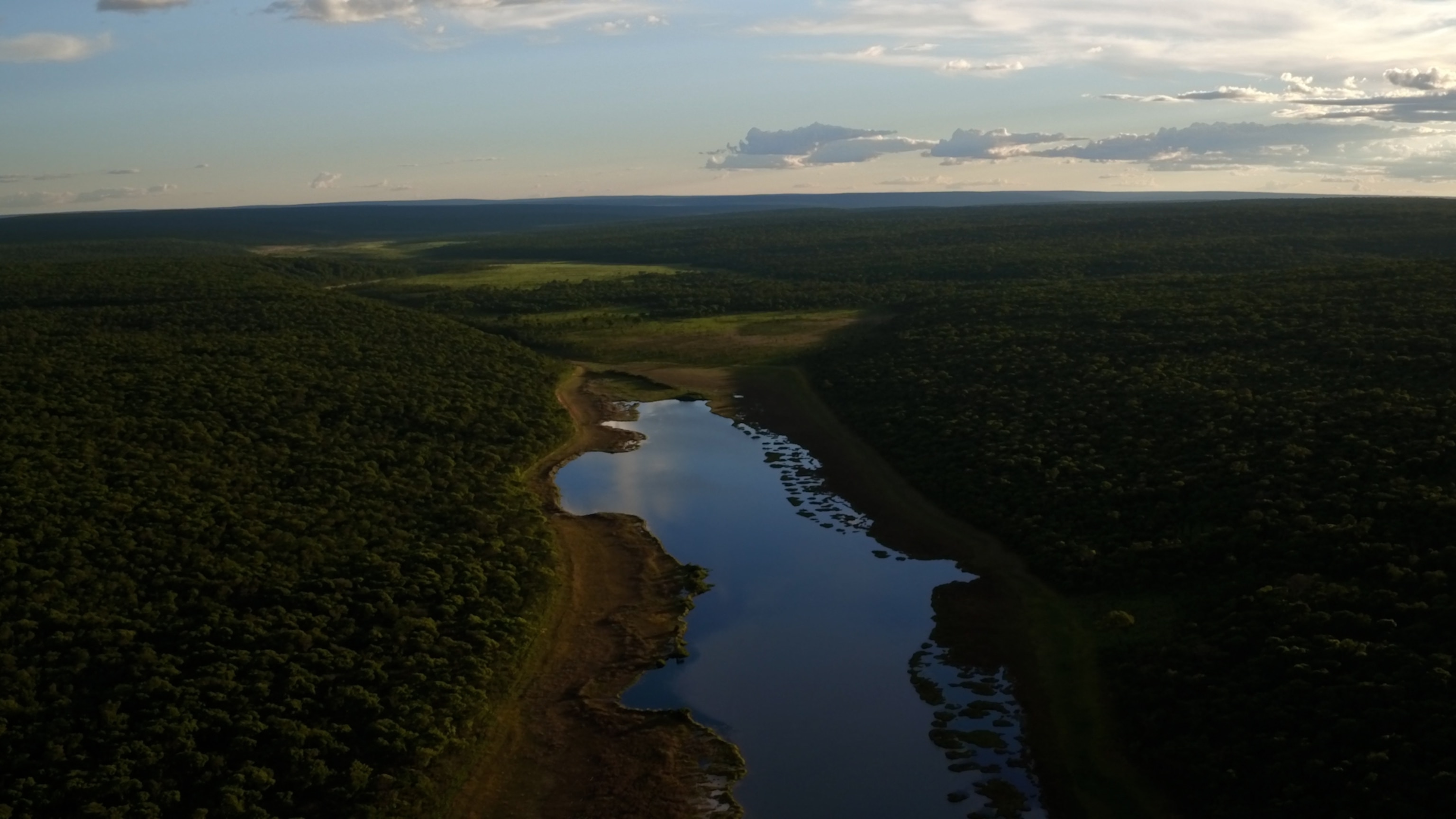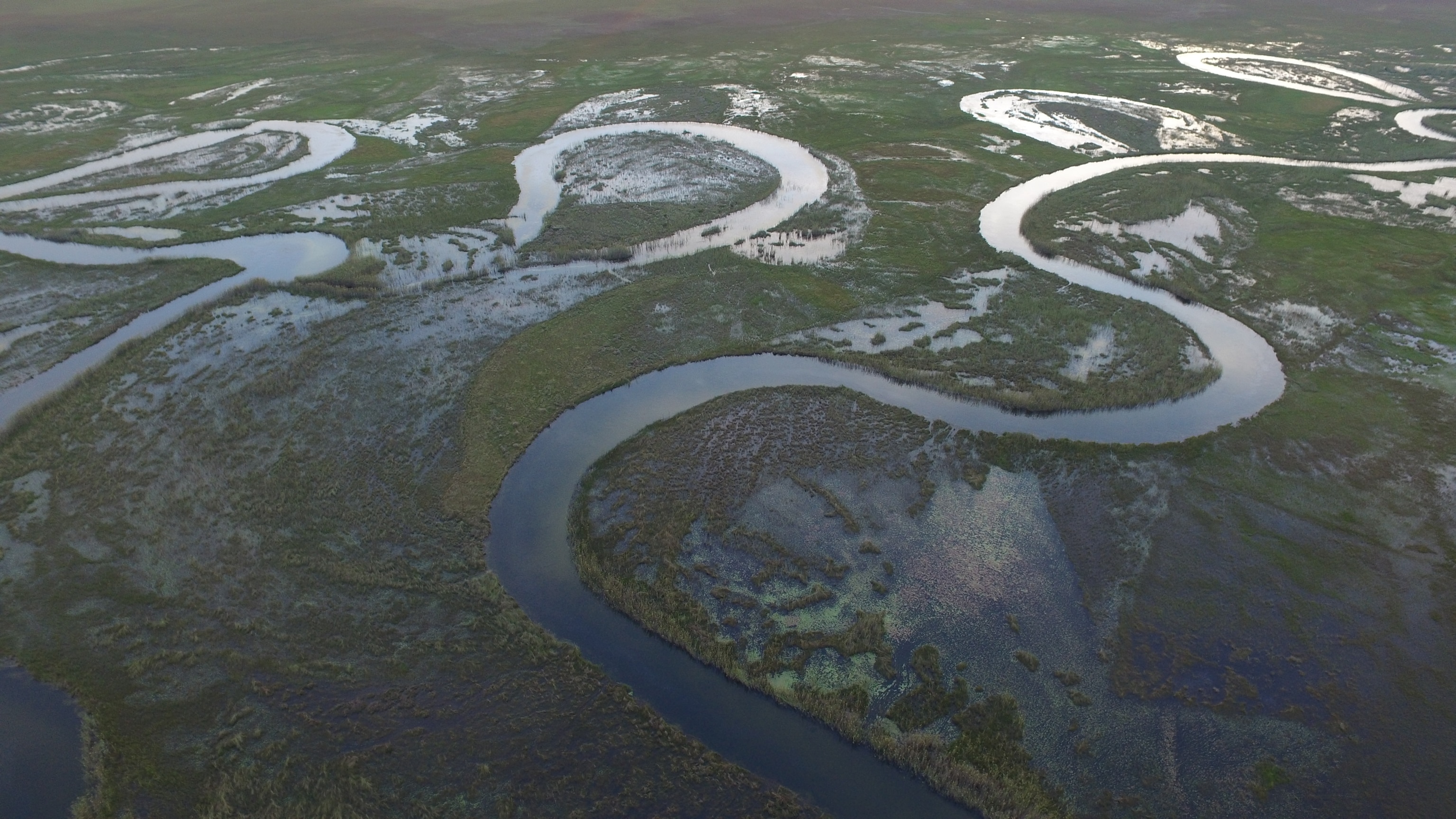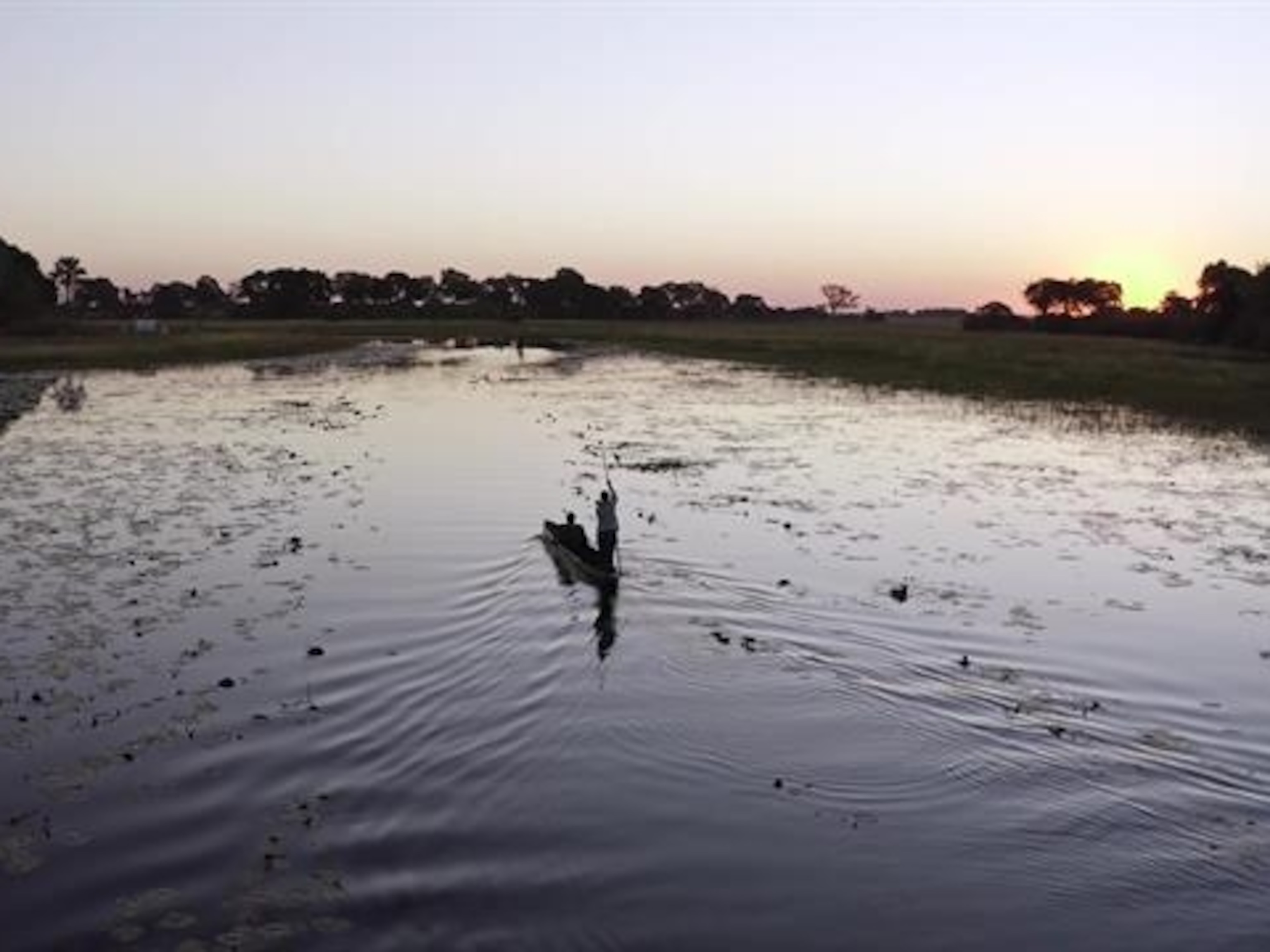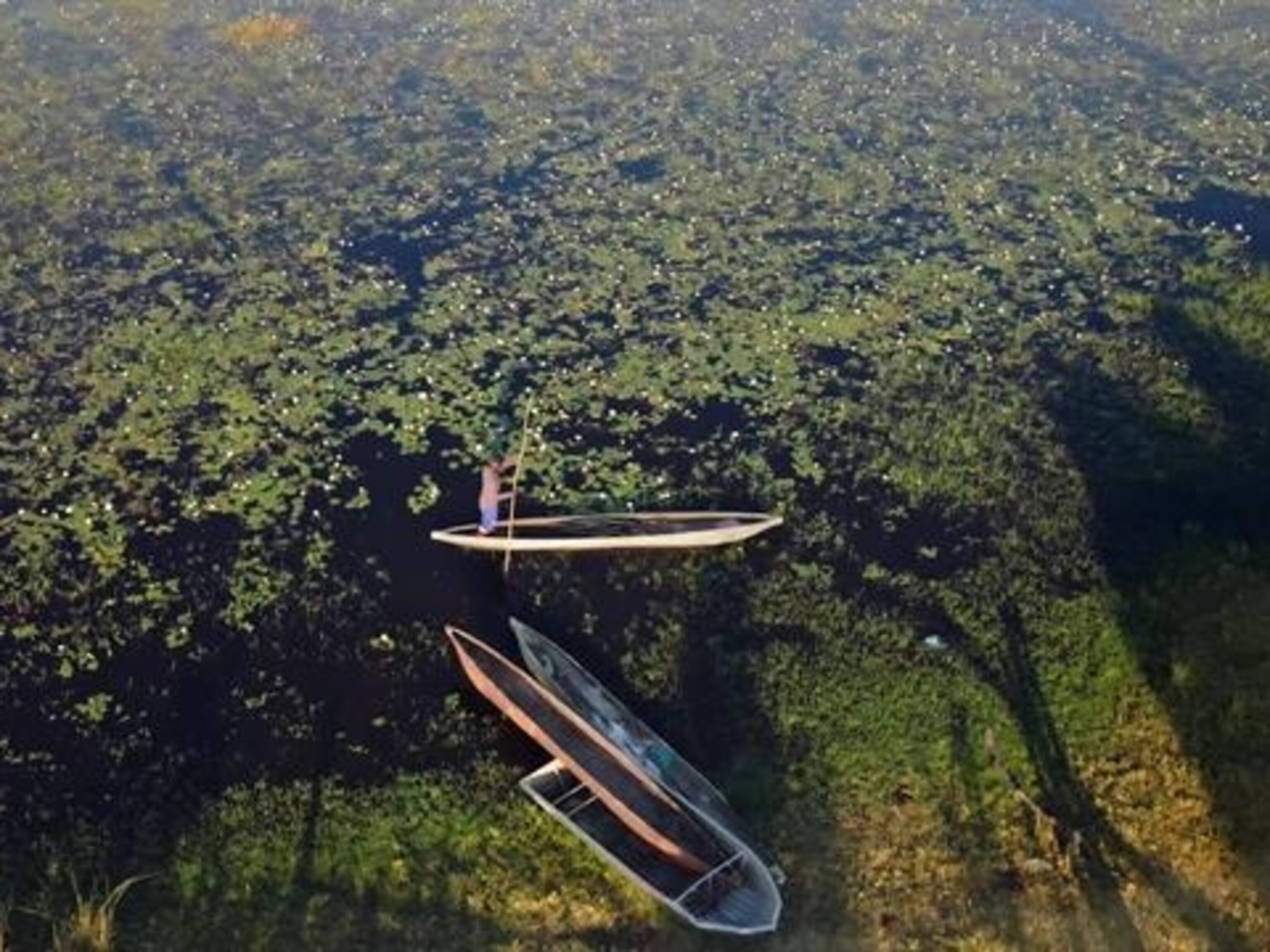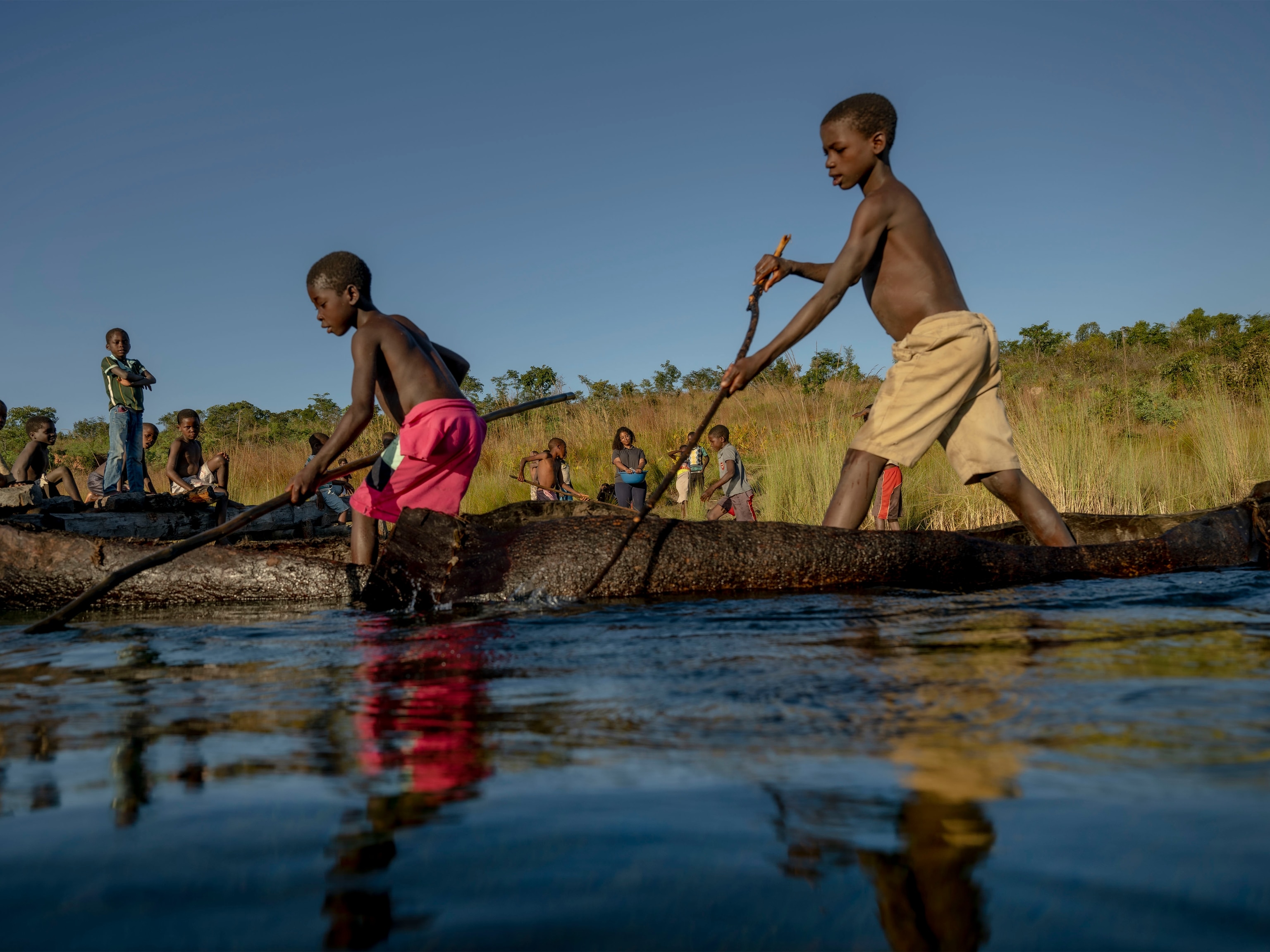Keeping a finger on the Okavango’s pulse
As the rivers of the Okavango Basin pump life into an otherwise dry African region, a group of researchers follows the flow every year to determine how we can help keep these waters alive.
Call it luck―or magic―but somehow two of Africa’s driest countries get a reliable source of water supplied to them from a third. A network of rivers and lakes clustered in Angola’s remote highlands feeds two rivers, the Cuito and Cubango, which then combine into the Kavango River in Namibia before crossing into Botswana as the Okavango River. It’s the unlikely circulatory system that supports not only the Okavango Delta, but also many miles of rural communities and wildlife that have next to no other water sources. A lot is at stake if this water were to disappear or become otherwise unusable, which is why the National Geographic and De Beers Okavango Eternal Partnership lends support into understanding how these rivers work, what could affect them, and how to make sure they remain healthy and viable. Having recently returned from the 2023 expedition along the Namibia section of the Cubango, Götz Neef, research manager under the OE partnership, answers some of the bigger questions about the partnership’s ongoing research.
Can you tell us why you’ve chosen to focus on the Cubango portion of the Okavango River in Namibia? What are the unique challenges it faces?
It’s a key lifeline of a river. The Cuito feeds a constant flow down, but the Cubango is the pulse—that bigger, more rocky force playing rhythm. And as it rains in the headwater area [in Angola] it creates these pulses that come through. A portion of that river is very important to Namibia [known as the Kavango locally], with it being such a dry country, we don't have many permanent rivers.
During the first expedition we noticed quite a lot of human activity along the Cubango, that made us realize we need to focus a bit more on the Namibian section of the river. Scientific interest into the Namibian portion is mainly to understand how the river is utilized, the impacts of humans on the river, and the economic background behind that. Hopefully, we’ll be able to draw out what can be done to help both biodiversity and people benefit from the river.
Partnering with local communities is essential to Okavango Eternal’s work; how has traditional knowledge helped on these river expeditions?
In Namibia itself we have local people on the team to guide us, and their Indigenous knowledge is invaluable when we enter a sacred place called Andara. Some of the old kings from the tribes were buried there; it’s a very mystical place where you have lots of little islands and the river just splits up into rapids. It’s very, very densely vegetated in there, with quite a bit of wildlife—normally the first time we see elephants is when we enter there. So that's sort of where we heavily rely on our local guides to get us through the maze of islands and rapids, and help us understand the cultural significance of the area.
What could happen to the system if the water flow lessened, stopped, or became polluted?
Dams and large-scale water diversion activities are very detrimental to a water system because they change everything … the water temperature changes and the pulses of flood water disappear, which are super important.
The pulse cycles play a vital role for fish to reproduce, as the fish rely on the swell of water creating these sort of seasonal swamps to spawn in. Another concern is fertilizer and pesticides going into the river, from which the effect on the freshwater biodiversity is not fully understood. If the smaller fish, especially, start to disappear, the food chain starts breaking down, which then becomes a big problem.
What are the most urgent things that we need to do to help maintain and protect this ecosystem?
I think one big thing is protecting the vegetation along the riverbanks. If that vegetation disappears, the banks destabilize, and you get soil erosion washing into the water. Then all that matter rushes downriver and causes pollution and blockages.
And, also, communities themselves monitoring the natural resources they consume. I think that’s a good start, because this kind of conservation can be led by communities making these small changes in their lives which have a big impact on the river health.
Find out how De Beers creates positive impacts here.
